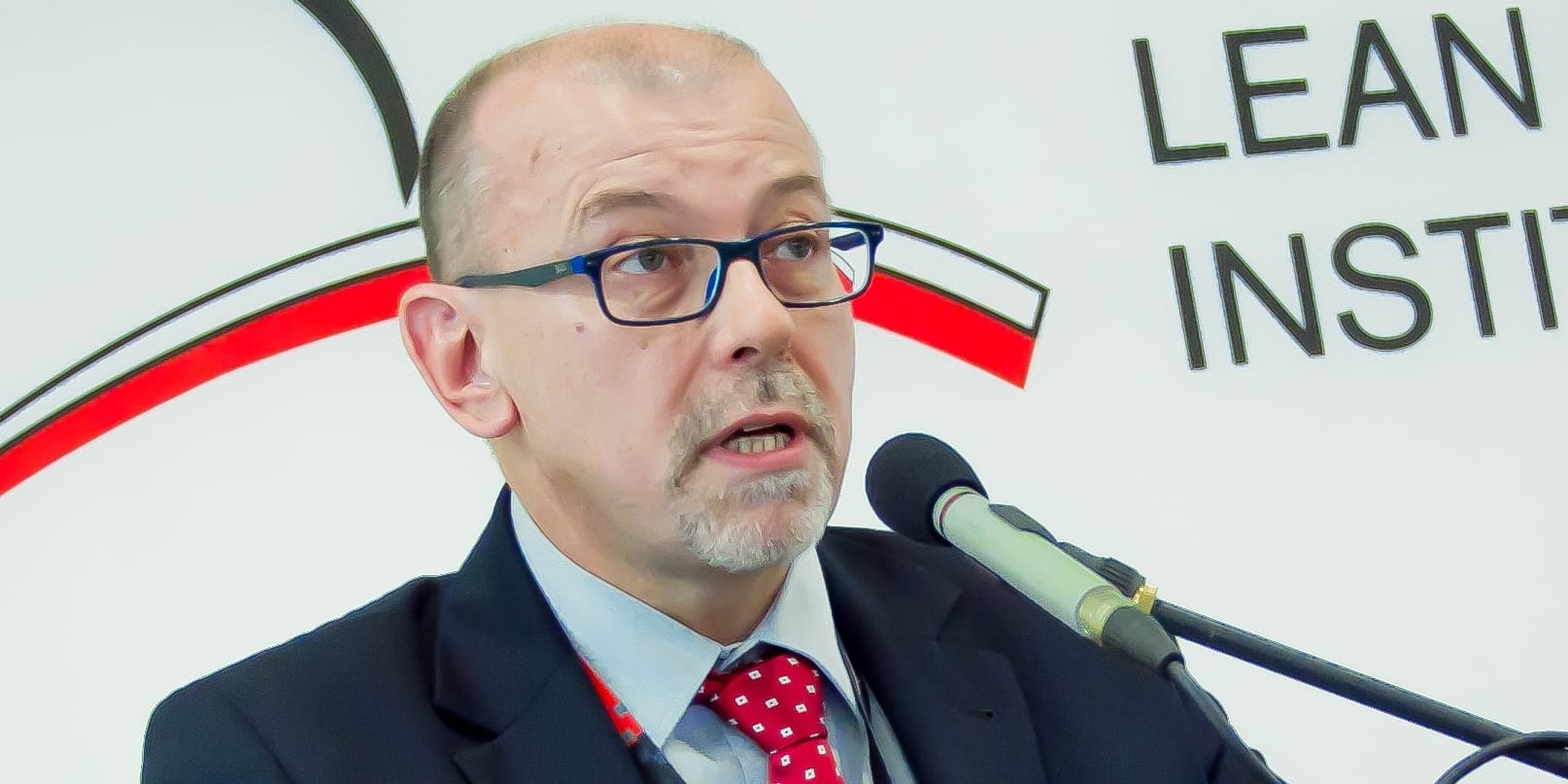
Can lean support strategy as much as it does operations?
FEATURE – Does lean management help us at strategic level as much as it does operationally? What’s the strategic thinking behind lean thinking? Michael Ballé answers these questions by looking back at some of history’s great military strategists.
Words: Michael Ballé
I have been fortunate in having the opportunity to practice lean with Norbert Dubost, the Industrial Director of five Thales Avionics plants. Our work together has made three things very clear to me.
First, lean delivers visible results in terms of quality improvement, inventory reduction and cost savings. It both improves competitiveness during bids and internal profitability.
Second, lean is a great way to engage operators and front-line managers in their work, and to make the work more fluid and easier to get right the first time. In particular, we’ve discovered how un-friendly some of our systems and tools can be to someone trying to assemble the right parts at the right time, and we are working hard on fixing things at a more detailed level than ever. Performance gains are indeed to be found in the details of the work, and so are the initiatives and suggestions that lead to higher engagement of employees and involvement in their teams.
Third, results can be directly correlated to the discipline with which the sites use the pull system to improve the level of just-in-time and jidoka and carry out kaizen initiatives that aim to improve customer value, and to the depth of the work with line technicians on standard work and suggestions. Without a doubt, practicing lean delivers operational results that improve competitiveness and show in the P&L.
But beyond operational effectiveness one question remains: is lean of any help at strategic level, not simply as a manufacturing tactic?
Toyota, the original inventor of the lean methodology, is hard to pin down on strategic vision. Indeed, many observers have concluded that the company’s approach is rooted in deep paradoxes.
A decade ago, a six-year study by Professor Takeuchi’s research team of the managerial environment in which the Toyota Production System is set concluded that Toyota thrives on a “culture of contradictions.” Contradictions such as 1) it moves slowly but takes big leaps, 2) it grows steadily yet it is a paranoid company, 3) its operations are efficient but it can use its employees’ time in seemingly wasteful ways, 4) it is frugal but splurges on key areas, 5) it insists communications be simple yet builds complex social networks and 6) it has a strict hierarchy yet it gives employees the freedom to push back – see Osono, E., N. Shimizu & H. Takeuchi (2008) Extreme Toyota, John Wiley and sons.
Not surprisingly, pinpointing the strategy of a company that thrives on nurturing contradictions is no easy task, and as a result, describing the strategic aspects of lean is no small challenge either.
Most of us evolve in more traditional organizations where strategic consistency is valued and strategy is generally expressed as strategic plans (which markets we seek and which we abandon) and the corresponding roadmaps. Senior leaders make some assumptions about which way markets are moving, establish goals in terms of where they’d like to be, sketch a roadmap to get there, and ask the organization to turn it into a step-by-step action plan with objectives and activities. At that point, something else happens that no one saw coming.
How can we demonstrate the strategic value of lean thinking beyond operational efficiency if we can’t explain the strategic thinking in lean thinking?
THE LESSONS LEARNED FROM MILITARY STRATEGISTS
On the way back from a gemba walk with Norbert in one of the Thales Avionics sites, we found ourselves discussing David Petraeus’ (former Director of the CIA and general in the US Army) approach to taking action in the face of uncertainty, as described in a recent Harvard Business Review post:
- Learn faster than your opponent;
- Focus guidance on bigger issues;
- Be ready to exploit surprise gains.
This came about because we were debating whether the managers of the site we had just visited 1) learned fast enough to be competitive enough to convince customers in the upcoming bids, and 2) whether our lean efforts over the five sites were delivering the results we looked for in terms of winning work, generating cash through inventory reduction and keeping to the total cost reduction we were aiming for. We also talked about the need to get moving faster on difficult topics such as the Internet of Things and environmental footprint reduction, and what local initiatives could be exploited to accelerate progress on these difficult challenges. The discussion seemed uncannily close to Petraeus’ advice and got us thinking.
Business strategy often borrows its concepts from military strategy – or, to be precise, the business interpretation of military strategy. The three most commonly quoted strategic thinkers are:
- Sun Tzu,a Chinese general from the Spring and Autumn period of Ancient China (500 BC) of whom we’ve retained the idea that the “art of war” – also the title of his famous treatise – is to make the adversary abandon the fight by superior positioning (location, alliances, information) before battle and faster mobility in combat in order to disrupt the enemy’s strategy.
- Miyamoto Musashi, a master swordsman and ronin, whose Book of Five Rings became popular during Japan’s industrial offensive in the 1980s. It advocates preparation through intensive mental and physical training, flexibility to changing conditions and the knack to push in quickly where the adversary is in disarray to make them loose all coherence and focus.
- Carl von Clausewitz, an early 19th century Prussian general and military strategist, who emphasized the psychological and political aspects of war and the need to make decisions in conditions of complete uncertainty. His best known concepts are that of the “fog of war,” not knowing what is really happening on the battlefield; “friction,” the operational difficulty of doing the simplest things in combat conditions, which affects both morale and outcomes; and the search for strategic and tactical “centers of gravity,” the sources of power that provide moral or physical strength, freedom of action or will to act.
Current American military doctrine is also the result of a contradiction. On the one hand there is “overwhelming force” that involves smarter tech, better guns and more of them. Colin Powell, a key proponent of this approach, asserted that when a nation engages in war every resource and tool should be used to achieve decisive force against the enemy in order to minimize casualties and end the conflict quickly by forcing the weaker force to capitulate, in line with the thinking of Carl von Clausewitz.
Consequently, Powell also came up with a clear checklist of when to engage:
- A vital national security interest is threatened;
- There is a clear attainable objective;
- The risks and costs have been fully analyzed;
- All other non-violent policy means have been fully exhausted;
- There is a plausible exit strategy to avoid endless entanglement;
- The consequences of the action have been fully considered;
- The action is supported by the American people;
- There is genuine international support.
This is very similar to traditional strategic thinking in companies where strategy is defined in terms of 1) which market segment is either attacked or defended, 2) what the objectives should be, 3) a strength, weaknesses, opportunities and threats analysis to look at costs and risks, 4) the assumption that this won’t happen by regular means so a strategic push is necessary, mostly through investment, 5) a contingency plan if things don’t work out as hoped, 6) due consideration of all consequences, 7) get buy-in from the rank and file, 8) support from the board and key suppliers and partners.
So far so good.
Yet, another dimension of strategic thinking reflected in General Petraeus’ comments emphasizes strategic and tactical agility rather than sheer force of numbers. This contradictory form of thinking, which has been taken very seriously by the strategic thinkers in all armed forces, was outlined by John Boyd, a US Air Force colonel and fighter pilot who was known as “40 seconds Boyd” – 40 seconds was the time it took him to shoot down his opponents in aerial combat. Boyd talked about the psychological dimension of combat, found in the Sun Tzu to Clausewitz tradition. His main idea was that if one can react faster than an adversary to a rapidly changing reality, one can disrupt his plans, push him into confusion and inability to make decisions and take the upper hand. His ideas had a large influence on military thinking, leading to developing faster, more flexible fighter planes such as the F-16 and an increased reliance on special operations teams for the conflicts of the 21st century, in which defining who the enemy is has become the number one challenge.
Boyd mainly outlined his ideas in briefings and left few written materials, but a key article explains the core of his thinking: mental frames are more rigid than most situations warrant as things change faster than we can change our mind. By constantly forcing ourselves to break down our mental frames into their factual components and then recreating new frames one can adapt to facts (effectively learn) faster than the opponent, disrupt their own strategies, and win. He detailed this by proposing the OODA cognitive loop as a model of how people react to events. Boyd describes interaction with any environment as a cycle of four key elements:
- Observation – collection of data through the senses;
- Orientation – analysis and synthesis of data, which forms a mental perspective;
- Decision – determination of a course of action based on one’s current mental perspective;
- Action – physical playing out of decisions.
Boyd’s main idea was that if you could teach yourself faster OODA loops, you could disrupt the adversary’s own loop, utterly confuse them and defeat them – in essence fleshing out a specific framework to the more mysterious thinking og strategists like Sun Tzu, Musashi or Clausewitz.
AN EXAMPLE WE KNOW - TOYOTA
Serendipity at work – one of the examples John Boyd used to explain his approach was… Toyota. He had read lean’s foundational book, The Machine That Changed the World, and investigated further, finding flexibility and fast change of die to be a good illustration of his theories – specifically mentioning Ohno and Shingo creating flexibility to get to the market faster than their competitors:
Indeed, in Machine Jim Womack and Dan Jones pointed out that Toyota developed and brought to market more cars than their competitors. A recent study of the range of products in automotive shows that Toyota’s range is not only wider and richer in models than its competitors’, but that it also has less internal cannibalization.
Furthermore, Toyota’s flexibility strategy enables them to carry more variety on less capital expenditure since many of their models can be built on the same line. On top of which their constant efforts on quality allow them to both sustain their prices and keep costs low, earning about $2,700 more by car sold than their competitors.
Toyota is hard to read when it comes to traditional “market” strategy. However, it is very clear that they consider “increase customer satisfaction by developing people” a clear long-term strategy, as expressed by better quality, greater variety at lesser costs, and better energy performance. This improvement approach rests not on more rigid execution but on the contrary, on greater development of their employee’s autonomy and initiative. As a result they have indeed led their competitors to throw in the towel – US automakers gave up the fight for small-range models, and as we’ve seen VW just gave up the fight on energy performance (well, tried to cheat their way through and got caught).
If we’re willing to go out on a limb, we can hazard the guess that Boyd’s thinking holds the key to one of the most difficult aspects of lean practice: visualization and visual management. Some ideas are so deeply engrained, we forget that they’re only ideas – not God-given or natural rules. For instance, taylorism stems from the revolutionary work organization concepts and techniques invented by Frederick Taylor, much as management-by-objectives grew from Alfred Sloan’s equally revolutionary practice at General Motors and lean results from Sakichi, Kiichiro and Eiji Toyoda’s own management innovations.
- Taylorism aims to control the actions of every employee by prescribing a single, detailed way of working for everyone, thus creating a large organizational machine focused on efficient output regardless of environmental conditions. Specialist engineers devise the work of worker drones, much like they design the components of a machine.
- Management-by-objectives aims to force the decisions of every manager by giving very specific targets. For instance, if a manager is measured against the objective of reducing costs by x percent from her budget, she will naturally look at every line in her budget and decide how to cut costs here and there to achieve the required number. The objective bends her decisions in a certain way, such as invest on equipment (not counted as cost) and reduce headcount (counted as cost).
- After specifying action, forcing decisions, working backwards with Boyd’s OODA loop, it becomes apparent that lean’s aim is to influence every employee’s orientation through visualizing processes and insisting on observation.
Indeed, a fully developed pull system creates visual cues that enable employees to see intuitively and on the spot whether:
- They’re achieving the quality necessary to satisfy customers (both internal or external);
- They’re working within the target cycle time and ahead or late against plan;
- They know the next job they’ll have to take on when they’ve finished the one they’re currently working on;
- Their working environment is in the proper conditions to do the job right without effort and see the detailed criteria that distinguish OK work from not-OK work;
- They know what situations are problematic and should not be faced without help and who to call in case such problems do occur.
In the work environment created by a pull system, actions are not set as in the taylorism workplace, but standards are always clear so everyone can do the job with confidence; also, decisions are not prescribed as in the management-by-objectives environment. Autonomy is encouraged, and defined as the ability to bring back odd or problematic situations towards the standard. The workplace is designed to highlight reference points so that employees use their creativity to align their efforts towards customer value, and, in doing so, learn.
What then, is the strategic thinking in lean thinking? The idea is not to pick growth segments and abandon unprofitable ones, but to propose a wide range of models faster to customers, see which ones they pick up and continue to improve them, and abandon those they don’t – but not the segment. The first step to a lean strategy is to know who your customers are. The second step is having a clear idea of which improvement dimensions we want to tackle to put pressure on the market by putting pressure on ourselves (such as better quality, faster offer of more variety through greater flexibility, better value for money or greener products). These improvement dimensions are long-term, and competitive advantage comes from the determination of being better at it than yesterday, steadily. Over time such pressure on markets can redefine the game itself by creating new market standards, as Toyota has done with quality, range and now energy performance – forcing competitors to follow without having the operational capability to do so, and loading them with an additional burden of costs.
This strategic ability is made possible by the three aspects General Petraeus mentioned: learning faster than competitors, keeping guidance of managers on the bigger issues and being ready to exploit unexpected gains.
WHAT DOES A LEAN STRATEGY LOOK LIKE?
We would suggest that a lean strategy be formulated in the following terms:
- Know your customers and follow their changing expectations;
- Choose the improvement dimensions to put dynamic pressure on the market (by driving the pressure on your own operations);
- Learn operational performance faster than your competitors;
- Develop managers’ autonomy and keep the focus on the bigger issues;
- Follow through quickly on unexpected gains.
Markets are fundamentally competitive: we compete to offer our customers the best value-for-money, and customers choose – no matter how much corporations try to take choice away from them through cornering niches, trying to gain monopoly positions or making shady non-competitive pacts.
In the end, the company that better convinces customers always wins.
Traditional strategies often assume that a roadmap will lead to the desired outcome because “all things are equal.” Today more than in any other time, this is simply not a tenable assumption. Change is the defining feature of our current environment and even if our traditional competitors don’t move that fast, alternative technologies come into play where we haven’t seen them come – think how fast e-books are replacing print. Lean is often reduced to a manufacturing tactic because it doesn’t fit the frame of traditional strategy. Lean can’t tell you which niche to pursue, it can’t help you build a roadmap, and it won’t tell you what reasonable objectives are or how to incentivize people to get them.
Lean, however, is the key to creating dynamic strategies built on more mindful care of customers, more dynamic objectives (reduce the waste by half every year), faster learning, greater involvement of all people all the time for stronger morale, more determined focus on higher-level goals and quicker exploitation of unexpected opportunities. This, we believe, is a strategy in itself, and one that is in line with a strategic tradition dating back to Sun Tzu, based on the experience that seeking dynamic gains beats static efficiencies every time.
THE AUTHOR

Read more


INTERVIEW – PL sits down with a consultant and a manager from the St Elisabeth hospital in the Netherlands to talk about the organization’s “loving care” approach to treating patients.


FEATURE – How “Double-Loop PDCA” was discovered due to a problem with implementing a lean daily management system in a South African hospital.


INTERVIEW – In this Q&A, the CEO of EHA Clinics in Nigeria shows how leadership embraced continuous improvement, empowered staff, and shifted from firefighting to coaching, creating safer, more efficient patient-centered care.


GETTING TO KNOW US – We continue our series of interviews with Lean Global Network directors with a Q&A with another veteran of the global lean movement, Poland’s Tomasz Koch.

